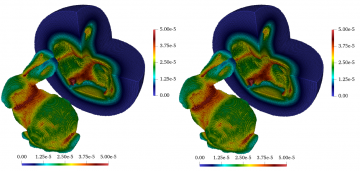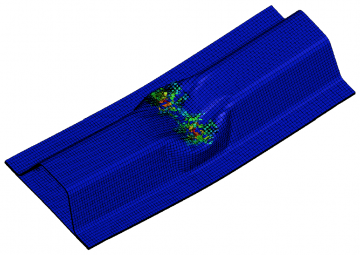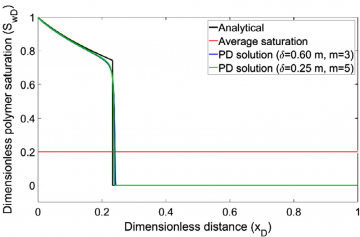Pablo Seleson
Highlights

PDMATLAB2D is a meshfree peridynamics implementation in MATLAB suitable for simulation of two-dimensional fracture problems. The purpose of this code is twofold. First, it provides an entry-level…

The focus of this paper is on application of peridynamics (PD) to propagation of elastic waves in unbounded domains. We construct absorbing boundary conditions (ABCs) derived from a semi-analytical…

Construction of absorbing boundary conditions (ABCs) for nonlocal models is generally challenging, primarily due to the fact that nonlocal operators are commonly associated with volume constrained…

We present a data-driven strategy for effective construction of a surrogate model in high-dimensional parameter space for the ion energy-angle distribution (IEAD) output of hPIC simulations of plasma…

Efficient and accurate calculation of spatial integrals is of major interest in the numerical implementation of peridynamics. The standard way to perform this calculation is a particle-based approach…

We present an elementary and self-contained proof that there are exactly four symmetry classes of the elasticity tensor in two dimensions: oblique, rectangular, square, and isotropic. In two…

To predict the mixed damage modes of unidirectional fiber-reinforced polymer (FRP) laminates under dynamic loading, a finite element method (FEM) based peridynamic model is introduced in this work.…

Peridynamics is a relatively new field in continuum mechanics that has developed over the past 20 years. This work studies the evolution of collaborations in the field of peridynamics since its…

Coupling peridynamics based computational tools with those using classical continuum mechanics can be very beneficial, because it can provide a means to generate a computational method that combines…

This paper concerns anisotropic two-dimensional and planar elasticity models within the frameworks of classical linear elasticity and the bond-based peridynamic theory of solid mechanics. We begin by…
This paper explores the restrictions imposed by bond-based peridynamics, particularly with respect to plane strain and plane stress models. We begin with a review of the derivations in [1] wherein…

Diffusion-type problems in (nearly) unbounded domains play important roles in various fields of fluid dynamics, biology, and materials science. The aim of this paper is to construct accurate…

A general state-based peridynamics model is developed to simulate transport of fluids in an arbitrary heterogeneous porous medium. The generality encompasses modeling of multiphase,…

Local-to-Nonlocal (LtN) coupling refers to a class of methods aimed at combining nonlocal and local modeling descriptions of a given system into a unified coupled representation. This allows to…